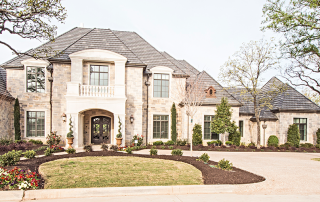Find a property, arrange the financing, and decide on a construction company, plan layout and room layout and much more: The construction planning of a house is extensive, time-consuming and builders can easily lose track. It is all the more important to proceed carefully and step by step. The support comes the best from Silvercrest Custom Homes and Renovations now.
The construction of the house and the associated construction planning can be subdivided into five phases: in the first phase, builders determine the basics of construction planning. They ask their bank or other mortgage lender about the possible financing framework and begin the search for a property. In phase two, builders know the key details to find a building partner and use it to determine what the house should look like inside and out. They also know how much money they have to build and can calculate the construction costs. Phase three is then the construction phase in which the site becomes a construction site. Phase four, the handover of the house, is best done in one day. In the final phase, the homeowner can expand his house, or even move in and look after the grounds, so the garden and outbuildings.

Construction preparation
The first steps of construction planning are the search for land and the determination of the financing framework. The property influences many more details. For example, if it belongs to a property developer, the question of the building partner is answered by itself. And the financing framework clarifies how much house a builder can afford.
Land Search
The decision to build a plot has great influence on the rest of the construction project and the construction planning: First, because it often binds a large part of the available construction costs. On the other hand, because a development plan and spaces to be maintained or the orientation of the property can set limits to the architecture of a house.
In sought-after areas, it can take a long time for future builders to find the right property. Sometimes the city also sells building land. Such land may need to be promoted or inscribed on an interest list and then await allocation.
Construction Financing
The financing of a house generally consists of three elements: First, equity, which can also include an existing plot or own work. Secondly subsidies for example from Bank or through home ownership programs of the federal states. And third, loans from lenders such as a building society or a bank. There is usually a permanent contact person who plans the financing and, for example, also applies for some funding.
The rough financing framework is calculated quickly. The lower the income of the builders and the lower the equity, the more difficult it is, however, to get a loan. In such cases, the financing partner may insist that, for example, a home savings contract is initially saved in full, or otherwise the equity capital is increased. This would mean that house construction would be postponed for years.
The construction planning
The plot and the financial possibilities are the framework – and can now be designed according to personal preferences. The construction company provides advice and execution in planning, but in some cases also determines many details. Property developers often build entire housing estates and therefore determine the rough appearance itself. At the end of this house planning is the construction contract.

